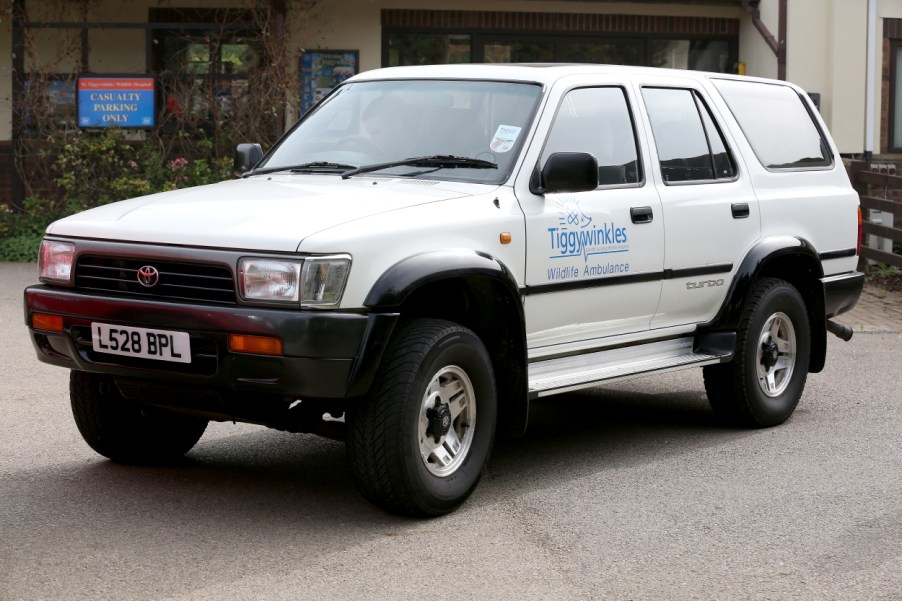
The Evolution of the Toyota 4Runner Is Dramatic
Some vehicles tend to remain the same over the years, while others go through drastic changes that essentially turn it into a new vehicle, even if it has the same name. The Toyota 4Runner has made some amazing strides over the years, but there’s one crucial area that has remained the same. Motor Trend has all the details regarding what’s evolved, and what will most likely never change.
1st generation Toyota 4Runner
The first Toyota 4Runner generation ran from 1984 to 1989. As far as looks went, the 4Runner had little flash to offer. It was a plain built 2-door SUV that didn’t turn heads when it drove down the highway.
This probably had to do with the fact that the 4Runner was essentially a modified Hilux pickup truck, which wasn’t known for its looks either. The 4Runner still began to attract attention with the off-road community, however, and it slowly drew in a cult following. By the end of the ’80s, it was one of the most popular SUVs to hit the trails.
Not much change for the 2nd generation 4Runner
The second-generation Toyota 4Runner didn’t receive many changes beyond extra doors to make entering and exiting more smooth for passengers who were relegated to the back seat.
The rear leaf springs were replaced with coils, and a chain-driven transfer case helped reduced road noise. Otherwise, there were no major updates that helped it stand apart from the first generation.
Once again, the second generation had a five-year run before being updated. It ran from 1990-1995.
The 3rd generation 4Runner got some pretty big tweaks
Toyota finally decided to let go of the Hilux influence in the third generation of the 4Runner. It received a bigger engine to give it more power, and Toyota made it smoother for driving on road.
The body style was also lengthened, giving the 4Runner a more attractive look. Some of the lines on the frame were smoothed out, which was an improvement over the boxy shape that plagued previous generations. The interior also got some much-needed improvements, giving it a more modern look.
The third generation had a slightly longer run that lasted from 1996-2002.
Changes continue for the 4th generation Toyota 4Runner
The fourth generation left the box shape behind even further as the lines were softened even more. The interior was also given more room, which was an attractive choice for anyone who likes to go off-roading, but still has to get the kids to school on time.
This generation spanned from 2003-2009. The 2003 model is one to avoid due to the rust problems, but the other model years don’t seem to be plagued with this unsightly problem.
The long-lasting 5th generation
The fifth-generation is easily the longest-lasting, as it began in 2009, and continues until the present. It once again departed from the smooth lines more appropriate for a sedan and incorporated some sharp edges that give it a tough look.
While Toyota is focused on daily driving more, the TRD pro trim is perfect for any fans of going off-road. Features in the interior like USB ports and driver-assist features bring the 4Runner into the 21st century, while still remaining true to its off-road roots.
Off-road for life
While there have been many changes to the 4Runner over the years, one thing has remained the same. It’s an off-road vehicle, and that will most likely never change. The 4Runner has been designed for crossing deserts, thundering over streams, and tearing up trails since the beginning, and that has only gotten better.
If you’re looking for a used 4Runner, the third generation is considered the best for going off-road, but it might not come cheap. The 4Runner’s price might shock you, especially the used models which tend to hold value. Still, you get what you pay for, after all.


